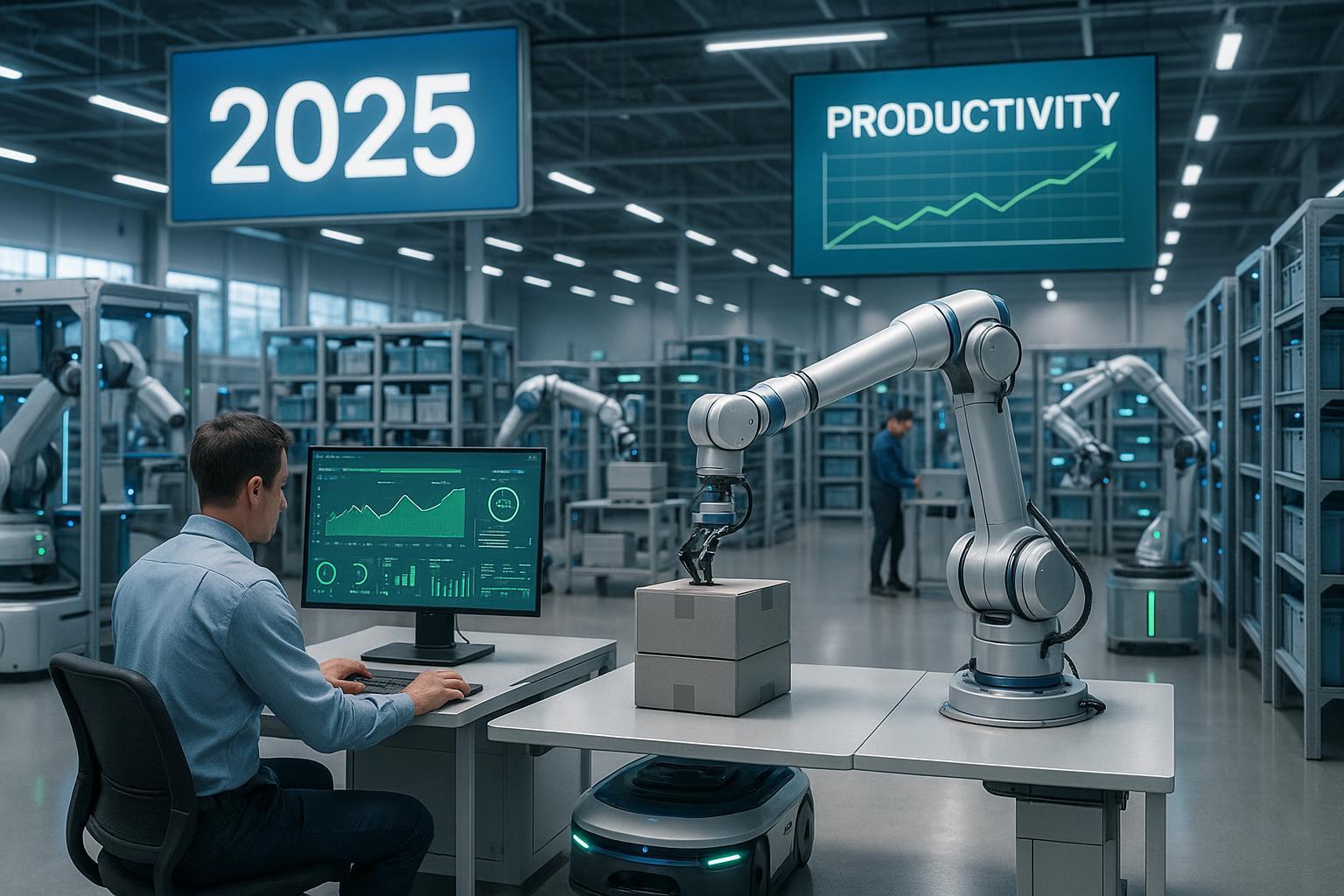Innovative Technologies Transforming Warehouse Productivity in 2025

The 2025 Inflection Point: Why Integrated Tech Is Redefining Warehousing
As warehouses race toward 2025, the way we think about productivity is fundamentally changing. The convergence of AI, robotics, autonomous mobile robots (AMRs), advanced analytics, and sustainable energy solutions is catalyzing an operational revolution—not just in efficiency, but in resilience, agility, and data-driven decision making. Recent industry milestones are underscoring how multi-tech integration brings outsized gains:
- DHL’s global network surpassed 500 million picks using AMRs at 35 sites, a testament to scalable automation (DHL news).
- Amazon’s Shreveport fulfillment center achieved a 25% reduction in fulfillment costs following advanced robotics upgrades—projecting $10 billion in annual savings by 2030 (MMH report).
- Warehouse robots market is set to grow at a 14.1% CAGR from 2025 to 2032 (PulsePeak Market Research via LinkedIn Pulse).
Siloed vs. Integrated: The Real Benchmark for Productivity Gains
Most top outlets report on siloed breakthroughs—AI for inventory management, robotics for picking, analytics for order forecasting. But the decisive competitive advantage for 2025 will emerge from blending these solutions into an intelligent warehouse ecosystem. Integration delivers quantifiable results:
| Tech Stack | Productivity Benefit | Benchmark Example |
|---|---|---|
| AI-driven Analytics + AMRs | 20% reduction in stockouts, 30% lower inventory holding | DHL + LocusBots (2024) |
| Robotics + Predictive Maint. | 18–25% lower costs, 50% less downtime | Boston Dynamics/DHL Stretch Robot (2025) |
| Advanced Sorting + Sustainability | 25% cut in delivery costs, energy optimization | Amazon, Walmart Canada (GreyOrange integration) |
(Source: DHL, Amazon, Walmart Canada)
Expert Voices: Tech Convergence as a Strategic Imperative
According to the 2025 MHI/Deloitte panel, “Tech convergence (AI, robotics, AMRs, analytics, IoT) is not just about automation—it's redefining agility, resilience, and skills alignment.” (MMH Special Report)
Epicor’s analysts emphasize that embedding AI-powered workforce planning boosts retention and performance while future-proofing skills for the next wave of transformation (Epicor Blog).
Change management and upskilling are central themes: Early adopters who blend tech enablement with proactive workforce development outpace those investing in isolated solutions.
The Tech Roadmap: Action Steps for 2025 Readiness
- Benchmark Current Automation & Integration Levels
- Assess existing automation: Are robotics and analytics systems “speaking” to each other?
- Use tools like WERC’s DC Measures Report for standardized efficiency metrics.
- Pilot Integrated AI/Robotics Solutions
- Look for scalable, modular platforms (e.g., LocusBots, Symbotic, Boston Dynamics Stretch).
- Start with regions/sites holding the greatest volume or variability.
- Invest in Workforce Upskilling for Robotics & Analytics
- Create robust training programs in robot management, predictive analytics, and change management (Epicor workforce planning).
- Pursue Sustainability Tech: Energy Optimization, Eco-Efficient Storage
- Evaluate next-gen storage from leaders like Symbotic (Symbotic release).
- Monitor consumption and carbon footprint improvements post-adoption.
- Build an Agile Tech Adoption Roadmap
- Prioritize solutions that offer interoperability and phased implementation.
- Embed risk assessment and change management at every stage.
Risks, Challenges & Change Management
- Workforce impact: Automation can disrupt traditional roles but offers upskilling opportunities. Invest early in retraining.
- Integration risks: Piecemeal approaches create data silos—prioritize unified platforms and cross-system connectivity.
- ROI clarity: Use phased pilots and real-time benchmarking (DHL, Amazon, Walmart) to quantify and prove value before scaling.
In Summary: The Future Is Integrated—Act Now
Warehouses that prioritize multilayered technology integration—across AI, robotics, analytics, and sustainability—will unlock the productivity, agility, and resilience needed for a volatile global market. The window to future-proof operations is open now; decision makers should:
- Evaluate current systems and gaps
- Pilot integrated solutions at high-value sites
- Upskill teams
- Standardize data and KPIs
- Lead transformation with a holistic, agile roadmap
Further Reading & Benchmarking Resources:
- DHL’s AMR Milestone Press Release
- Symbotic’s Next-Gen Storage Automation
- MHI 2025 Industry Report
- Epicor Smart Workforce Planning
- LinkedIn Pulse: Warehouse Robot Market Analysis
Ready to lead the curve? Start your 2025 transformation journey today.